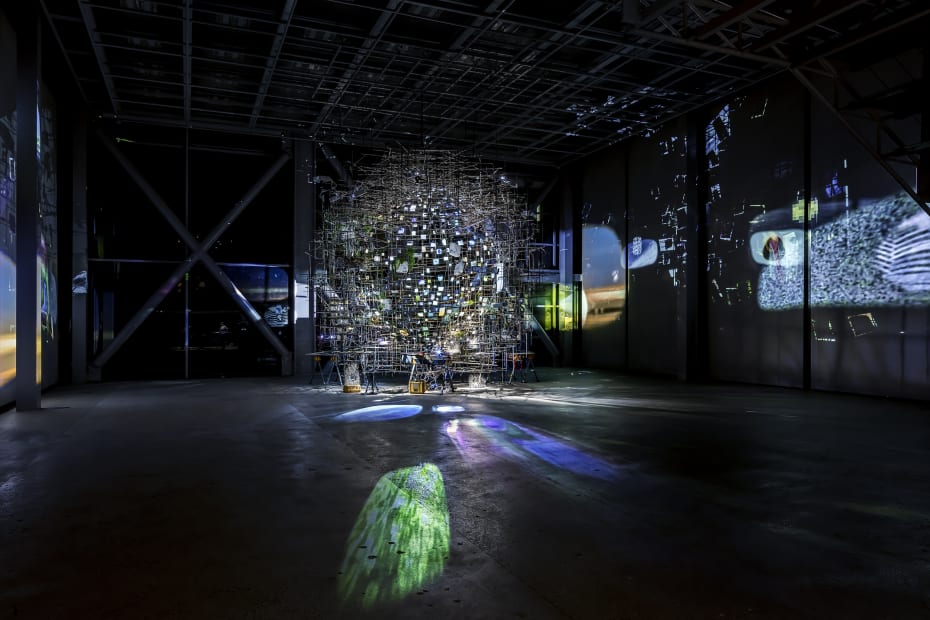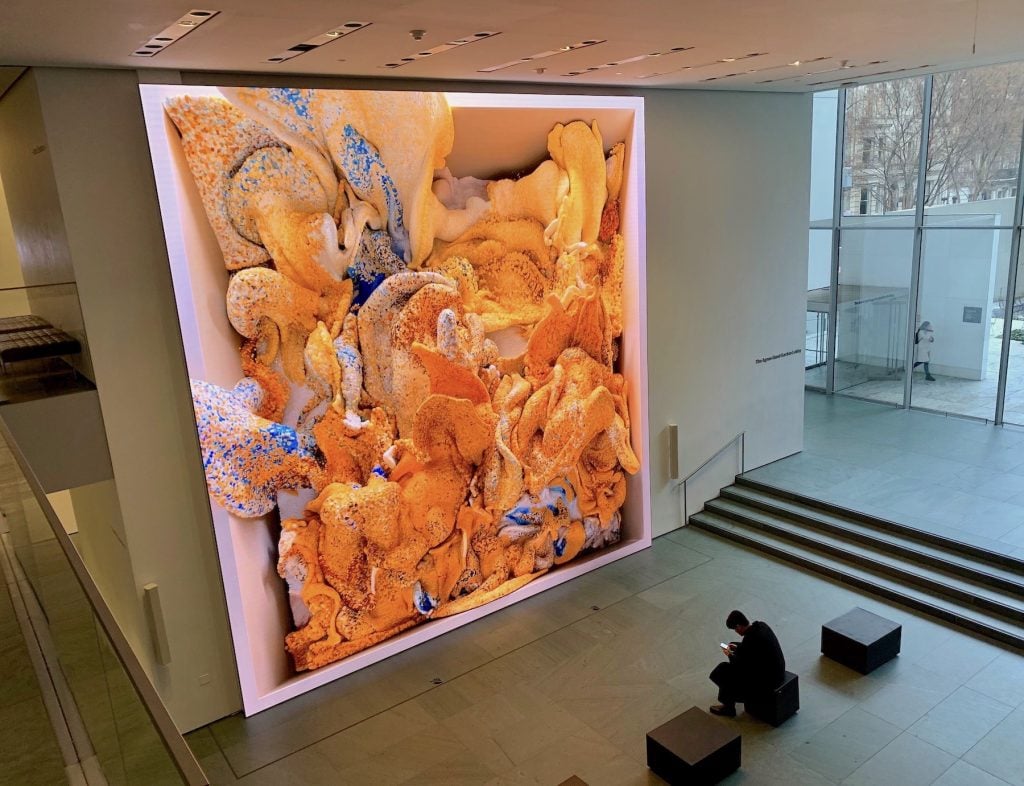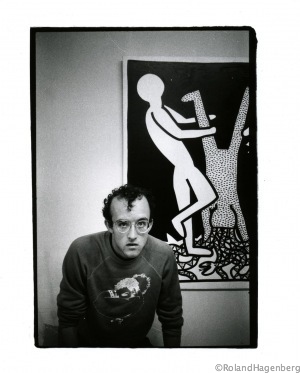Navigating the Art World: Insights from Paula Domzalski on Tradition, Innovation, and Inclusivity
In this article, we shed light on a recent conversation we had with the wonderful Paula Domzalski, founding director of The Art Consultancy, London Office. Paula has had a remarkable career in the international art world. From her early days as a cultural historian in central Europe and the USA to her present day art initiatives, Paula has secured her spot in the world of contemporary art. Her passion for art is matched by her commitment to making it accessible and inclusive, and her work has had a significant impact on the lives of many.
In this insightful interview, Paula shares her perspectives on various topics, from the complexities of the art market to the essential role of art in society. Currently, Paula is also a PhD candidate at Ludwig Maximilians Universität (University) in Munich, Germany, where she completed a Master of Arts. Now she working on a thesis ,deep-diving into the topical question: “Is AI/Chat GPT disrupting the creative process as we know it in contemporary art today?”
This academic pursuit underscores her deep engagement with the evolving dynamics of the art world, further enriching today’s topical discussion on the intersection of technology and creativity.

Currently Paula is working on a number of international projects. For example: an exhibition planned for a museum in St. Petersburg, Russia featuring the work of an established German photographer. However, this project has been temporarily put on hold until the current geopolitical situation stabilises.
Elsewhere, Paula is spearheading the creation of a collective of international contemporary photo artists. The aim is to present their works globally in both commercial and non-commercial settings. The contemporary photographic art segment remains relatively niche in today’s art market, representing only a relatively modest segment of sales, with painting still today occupying the largest market share. Paula’s mission is to foster greater enthusiasm and support for photographic art, giving this medium a louder and more prominent voice.
Despite the growing production of digital art using advanced technological tools, there is still a notable hesitation among buyers when it comes to collecting photographic images. The cancellation of this year’s Photo Fairs NYC strikes a rather doleful note .Any loss loss of a high-end Photo Art Fair is concerning, especially given the limited number of international fairs dedicated specifically to photo art and photography , the likes of Photo London, Paris Photo, and Photo Fairs in Hong Kong and Shanghai .

Paula also offers consultancy services to collectors, primarily based in Central Europe, advising them on their contemporary art collections. One of Paula’s noteworthy projects involves collaboration with the renowned photographer Roland Hagenberg. In March 2021, she began working with Hagenberg’s photographs of Jean-Michel Basquiat. These iconic black and white images, – the only known images of Basquiat taken in his Crosby Street Studio at the time – (1983) capture the dark-romantic and foreboding atmosphere of Basquiat’s world.
Hagenberg’s work, which also includes photographs of other notable figures like Andy Warhol, Jeff Koons, and Keith Haring, has significantly shaped public perception of Basquiat. These photographs have been published (TASCHEN) and shown amongst others in exhibitions in the Barbican, London and major museums in Tokyo, Frankfurt , Berlin, New York and more. They are in private and museum collections the world over.

Hagenberg, born in Austria in 1955, began his career in Germany before moving to Berlin in 1979, where he documented the local art scene. In the early 1980s, he relocated to New York and captured the essence of the art world there, including the only existing photo series of Basquiat working in his studio. Paula’s involvement with Hagenberg’s Basquiat photographs highlights her dedication to preserving and promoting significant artistic works. These photographs are considered essential for any Basquiat collector, and Paula provides detailed information on the available images, edition numbers, formats, and prices for interested collectors.
As a knowledgeable and experienced art professional, Paula Domzalski enlightens us with her perspective on the dynamic nature of the art world. Her insights into the challenges and opportunities of collecting, her innovative approach to art consultancy, and her experiences with charitable initiatives provide a compelling narrative. This interview captures her observations on the global art scene, the importance of cultural context, and the evolving role of art institutions.

The following is a summary of our interview.
Do you have a favourite artist?
“One of my absolute favourites is the contemporary painter Sergio Fiorentino. His work is wonderfully aesthetic, particularly his blue head portraits. He is based in Noto, Sicily. Sarah Sze is a remarkable artist, based in New York City. A very poetic installation artist.
I am particularly interested in contemporary African Artists at the present. There are so many extremely interesting and powerful painters , emerging and also very established artists from the African Continent. The list here would be pretty long! But a few names are: Soly Cissé, Pedro Pires, Oluwele Omofemi, Alain Joséphine……. Historically I love Francisco Goya – a brilliant artist and critical observer of his age.”

Emphasising the importance of emotional connection and personal relationships in art collecting. Paula advocates for collectors to immerse themselves in the artist’s world, fostering mutual growth and understanding. Paula reminisced about the traditional approach to art collecting, where collectors would build relationships with artists and support their creative journeys. This contrasts with today’s trend of treating art as a mere commodity. She also shared her involvement with The Connection, an organisation that used art to provide emotional support and transformation for their homeless clients.
As a collector, what should an art collector’s interest be when acquiring a contemporary artist’s works?
“You should be interested in the artist and fall in love with his/her work! An ideal collector is passionate . This is how it used to work. Collectors were always around the artists because they wanted to be part of that world. Acquiring the works they supported and helped the artists to live.”
“So I always say to collectors, …… buy everything that speaks to you emotionally and stimulates you intellectually. No matter what other people say. If you like it, if it speaks to you, make it yours. There are of course collectors who only see art as an investment. They commodify it and keep it in warehouses like gold in a bank safe.This to me is not the point of art. The works should be appreciated. They should be celebrated and also made accessible to the world. I cannot reconcile myself to this “hoarding” approach. In my opinion it robs art of its essence, which is communication and emotion. You can’t keep that locked up in a warehouse!
“I come from a generation where relationships with collectors are cultivated over time, and there is mutual growth and understanding. We connect with people who share our wavelength and have a serious interest in the process of making art, not just in owning a painting. For example, when I was living in Istanbul, I met a young guy around 2011, who had made a huge amount of money and was extremely interested in collecting art. When I asked if he had met the artists he was collecting, he said he had no interest in that. He just wanted to be sure that the value of his collection would go up”.
“This mindset is quite different from my own. I am too old school for that. I believe in knowing the artists and building a relationship with them. In the early 80s, talking about art and money in the same sentence was almost taboo. I was seen as “completely out of the question” for advocating and agreeing to a degree of art commercialisation. But now, the art world has swung to the other extreme, treating art purely as a commodity, which is something I find challenging to reconcile with my values.”
How do you manage your collectors, especially given the current market?
“I come from a generation where you grow with your collectors. … I need to have a connection with them and they should have a genuine interest in the artists and their work. An exciting task is working with a young collector and emerging artists and seeing how they grow. My job is to create a space and support the process of communication with which the artists and collectors can engage with one another.”

You have done some charity work, particularly with The Connection, London Westminster Can you tell us about that?
“Yes, I worked with The Connection, an organisation dedicated to helping homeless people in Westminster by providing overnight accommodation and daily , very dedicated assistance in finding their Clients jobs and places to live. The Connection offered a range of services to support individuals in rebuilding their lives, including health and well-being programmes, learning and employment services, and community support. One of their initiatives was an art room, a transformative space where every Connection Client could come and express themselves through art. This art room provided not only a creative outlet but also a therapeutic environment where people could find solace and purpose. It was a marvellous idea, and I was deeply saddened when it closed after COVID.”
Were there any notable works that you remember?
“Yes, I was incredibly surprised by the creativity and talent. There was a wonderful man who created brilliant postcards during his walkabouts across Britain, sending them as artworks to his chosen friends. The quality of work was excellent. Many of the Clients found solace and purpose in creating art. The Art Room space became THEIR space, a refuge where their creativity was acknowledged and encouraged. You could see them visibly “growing” in assuredness the more they came and the more they realised how creative they were. It was a marvellous and I think a very necessary initiative”

Can you share a memorable experience from your time there?
“There was a man, a former financial investor in the City. He became homeless due to a series of unfortunate events….. He came into the art room and barely spoke a word during his first visits. He was certain that he was not creative but began to open up and talk freely the more he painted. It was amazing to see how creating art and being in that supportive environment helped him as it also did others. ….. There was also one artist of Jamaican origin who had been on the streets forever. He was an absolute natural in painting. His work was remarkable. There were Iranians, Poles, Russians—people from all walks of life creating really good art. Some were more open to the creative process, while others appreciated the atmosphere and support. It was a profoundly moving experience.”
Following Paula’s insights on the collector-artist relationship, we delve into her views on preserving cultural heritage and making art accessible. These elements are crucial in maintaining the authenticity and emotional impact of art, ensuring it remains a powerful tool for expression and connection in society.

What do you define as cultural heritage within the art world?
“Cultural heritage involves looking at the elements that define an artist’s work, including their mission and the historical context……… An artist’s response, in whatever capacity, to their experienced environment is a key part of their legacy. ”
What are your view on the importance of preserving cultural heritage within the art world?
“Loosely and simply speaking, artists are a product of their times. They are influenced by everything around them, they are mostly not isolated and are responding to an environment that they find themselves in, using art as a “tool” to express these responses. Every artist’s work reflects the period and the environment they have lived or live in, whether it’s politically, philosophically or economically driven or purely emotionally charged. So each and every one of them is exposing us, the viewers, to our cultural heritage. They highlight it, and lead us down the rabbit hole, to wonder and in our turn, respond.”
What advice would you give to someone looking to make art more accessible?
“Use the structure of institutions, galleries and art associations but maintain creative individuality. Creativity is what counts. Art IS accessible to everyone but people have to KNOW about it. Make art fun. Make it a part of the cultural consciousness. Kindle interest in schools and in extra- curricular activities. I think this is going on anyway.
There is a huge amount of very successful work going on between the public and public institutions /museums today. I don’t really like those big institutionalised museums, they are too far away from the actual process of art creation. Art is almost laid on an” altar” for visitors to worship. But I am deeply impressed, for example by the Tate Modern, in the amount of people it draws to its exhibitions. I think its fantastic. Its drawing people in who previously, lets say in 70’s Britain would never have gone to an art exhibition. Yes, its all highly commercialised, but its getting people participating and looking. And that is of the essence! Its doing a remarkable job “democratising” art if you will”. Andy Warhol, Beef Soup AP (Artist Proof), (K), Owned by Private Collector
Andy Warhol, Beef Soup AP (Artist Proof), (K), Owned by Private Collector
What do you think about the commercialisation of art?
“The commercialisation of art has gone to the extreme. In Europe in the early 80s, it was considered taboo to talk about art and money in the same sentence. Now, art is a commodity….. I think that it is essential to strike a balance between appreciating art’s value but simultaneously maintaining its integrity.”
Have you faced any challenges as a woman in the art industry?
“When I started out in the 80s women faced professional and discriminating challenges everywhere and in every walk of life. It seemed to be just part and parcel of the existent glass-ceilinged work process . Roles were still very conservative and rigid in, for example Banking and Business . I was never drawn to this world. I grew up surrounded by artists and performers on the one hand and scientists on the other. It didn’t take me long to see where I would have more freedom as a woman and, being a free spirit , stuck to the world where creativity played the most important role. I refused to see myself at a disadvantage because I was a woman. I had grown up in a very male-dominated and patriarchal household and learnt very early on to stand up for myself.Or so I thought at the time!.But of course in the main institutions such as Museums and Academies men were still very much in the power positions then. But I had no intention of making a career in these institutions, so dodged any hard-core gender challenges”.
Can you share your thoughts on art exhibitions and their educational value?
Exhibitions are there to make you see and that is one of the greatest educational values we can pass on to the next generation. Know how to look and to see. Really look and really see. That is education!
What emerging themes in the art world are you most excited about?
“I’m very interested in, wary and aware of the potential and capabilities of today’s artificial intelligence (AI). Computer Art has been with us since the 50s but you can liken what we are experiencing now to a runaway tsunami. Since 2022 with the advent of, for example ChatGPt or MidJourney, we are experiencing a whole new springboard for creativity. It’s fascinating to think about how AI is redefining and will redefine the creative process . Google’s CEO Sundar Pichai has even claimed that Smart AI is: more profound than fire or electricity, or ANYTHING we have done in the past….”.
What do you think AI’s impact on creativity will be?
“AI’s impact on creativity could be profound. It challenges our traditional notions of what it means to be creative. With algorithms and machine learning, the process of creating art can change significantly. The historian Yuval Noah Harari has made a very interesting observation. He says that no technological advancement in human history can compare to smart AI, which is the first technology in history that can make decisions by itself and can create new ideas by itself. Smart AI is where we are today. Additionally has says something that to me is core to understanding what we are experiencing in this technological revolution today. He points out that up till now all historical – revolutionising, technological advancements, such as the printing press, photography, the radio etc. have helped us empower ourselves. But now with AI we are empowering machines. He even goes so far to say that we “are approaching the end of HUMAN history….”.
As contemporary artists are rather like the “Greek Chorus” of a civilisation and culture it will be very interesting to see what today’s artists will make of AI’s advancement in the next decade . How they interpret and integrate it into their work. I am watching this with huge interest.

You mentioned African art when we met previously. Can you elaborate on that?
Yes, African art is a major focus for me right now. I’ve been exploring it for a couple of years, and I think it’s wonderful. There are new voices and innovative approaches that are incredibly exciting. At the moment, it’s still raw and very interesting. However, I’m aware that this rawness may not last forever as it could be swallowed up and become more commercialised. But right now, it represents a fresh and unique perspective in the art world that I find immensely engaging.”








